When you think about Mexico and travelling there, what springs to mind? Beach resorts, Chichen Itza, Playa del Carmen, Cancun, cenotes? Believe me, there’s much more than these places (and much more to the Yucatán) in this huge country. You should definitely get out of the beach resort and experience more of the country. If you’re looking for things to do in Mexico, beyond your beach resort, the country has lots to offer. There are more ruins, more beaches, lots of history and exciting colectivo journeys. In this post, I’ll tell you about some beautiful, historic and exciting places you can visit in Mexico that you’ve probably never heard of.
These unknown places are split up into four categories: Adventure; Nature; History and Culture; Cities. So no matter what you’re into, you’ll be able to explore some of the unique places in Mexico. Get off the beaten path and see more of Mexico!
Places To Visit In Mexico For Adventurers That You’ve Never Heard Of
If you have an adventurous streak, Mexico has plenty of tourist attractions for you. Hiking, rafting, rock climbing. There’s so much to do. Here are my top five places to visit in Mexico for the adventurous that you’ve never heard of:
Jalcomulco
The tiny village of Jalcomulco is in the state of Veracruz and is an amazing place to visit. This sleepy town might not seem adventurous at first glance, but, if you ask me, it is Mexico’s answer to Queenstown (or at least has the potential to be). The town is becoming a kind of eco-resort and is generally a beautiful place away from the hustle and bustle.
In this town, there are several adventure sports companies and plenty of adventures to be had. Located on the banks of Río de los Pescados, it’s a prime spot for white water rafting, canyoning, zip lines, rappelling, mountain biking and horse riding.
There is no public transport to this tiny town. Instead, you need to hire a taxi from the city of Xalapa.
You can read about my adventure in Jalcomulco in this post.
Go rafting in Jalcomulco with Get Your Guide.
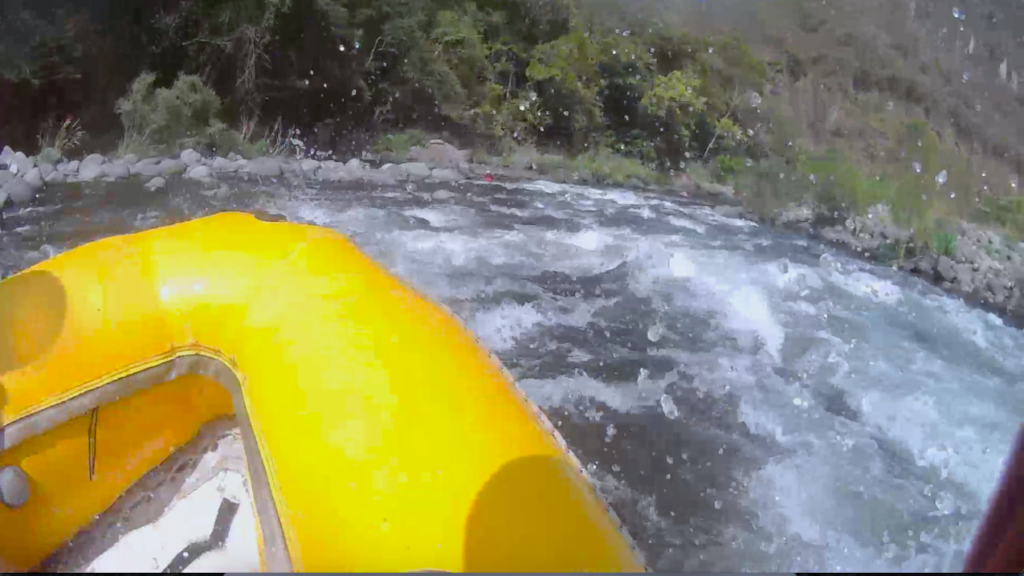

Rafting On Río de los Pescados, In Jalcomulco
Paricutin
One of the Seven Natural Wonders Of The World, the volcano Paricutín is an incredible place to visit.
In 1943 a farmer in the fields noticed the earth started to rumble and smoke. Shortly, the ground cracked and lava began to flow. Over the next years, the volcano rose and destroyed the town of Paricutín, as well as other small hamlets. This volcano was active for about eight years and produced a cone of about 400m high.
This is the youngest volcano in the world and the only volcano where humans have witnessed the entire life cycle.
Found in the state of Michoacán, the nearest city is Uruapan. But to see the volcano and hike it, you will need to set aside a full day from here. Leave the city early and catch a bus to Angahuan, which is the nearest town, from here it’s easy to find a guide. You have to take a horse to the base of the cinder cone, over lava fields. Once you reach the cone you can scramble up. Some areas are still hot and you can hear the rocks hiss and see the steam.
Seeing Paricutín is a long day, a horse ride and a scramble to the top. For the less adventurous, you can just take a horse to the ruined church of San Juan Parangaricuitiro. This ruined church looks like a dragon’s layer and offers great views of Paricutín volcano.
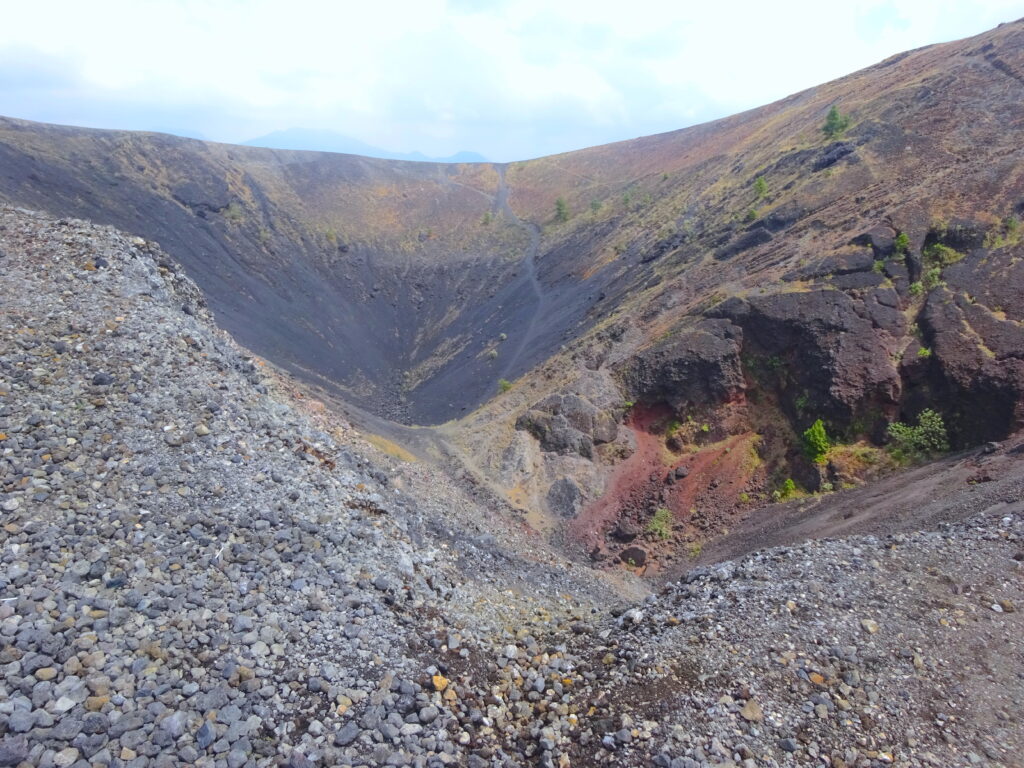

The Crater Of Paricutin Volcano
Santiago Apoala
Another place to hike, Santiago Apoala is a tiny rural village in the Sierra Mixteca. Located about 60 miles (98 km) from Oaxaca, it is a truly wild place, from which you can hike, bike and swim.
The valley where this village is found is beautiful. You can hike through the canyon and find beautiful waterfalls and lagoons to swim in.
Most trails are poorly marked, so it’s best to go with a guide when exploring this area. It is also extremely isolated, so it’s a great way to get away from the crowds. Due to its isolation, it’s also hard to get to, the easiest way is with a tour.
You can read about my adventure to this village and the hikes around the area in this post.
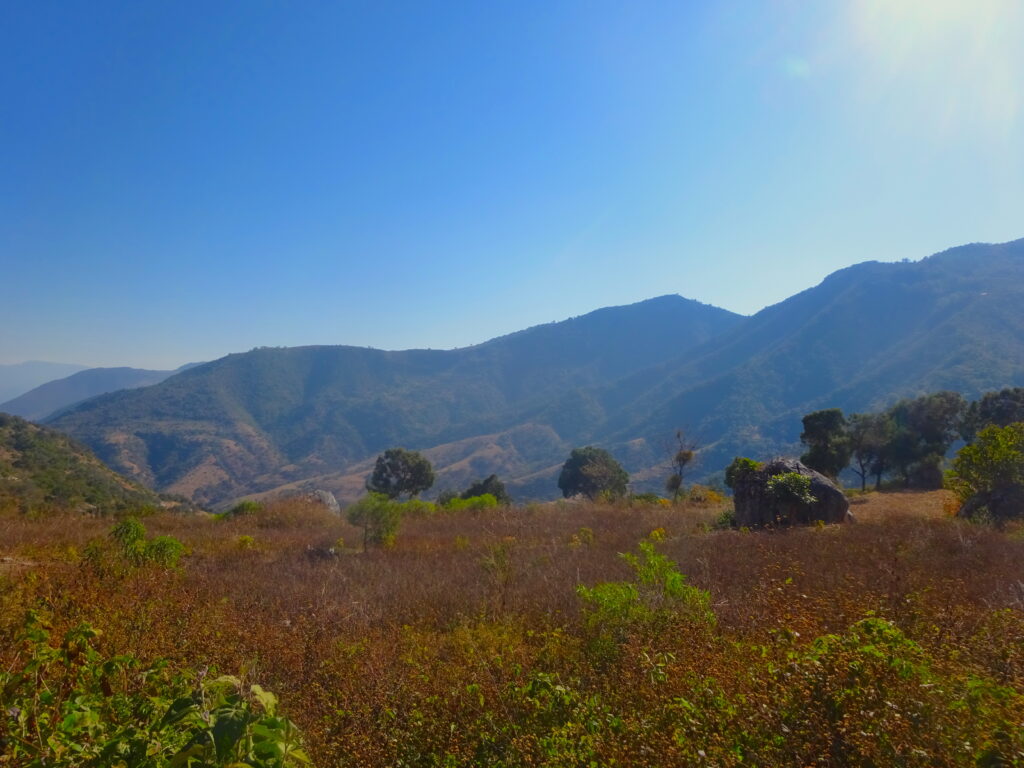

Views Of The Sierra Mixteca From Santiago Apoala
San Blas
Whether you have never surfed before, or have surfed before, San Blas, in the Nayarit state, is a hidden gem. There is a beach in the town (playa El Borrego) where you can have lessons or rent a board from Stoners Surf Camp.
Matanchén, the bay where San Blas is found, has plenty of other beaches to choose from for their surf. You can catch buses to these beaches from San Blas. One of these surfing spots, Playa Las Islitas is in the Guinness Book of World Records due to having the longest surfable wave, which was 1,700m.
The town of San Blas makes a great base for surfing. Although the season starts in May, it is in September or October that the south swell begins to bring the long rides. To get to this laid back surfers town you can catch a bus from Puerto Vallarta.
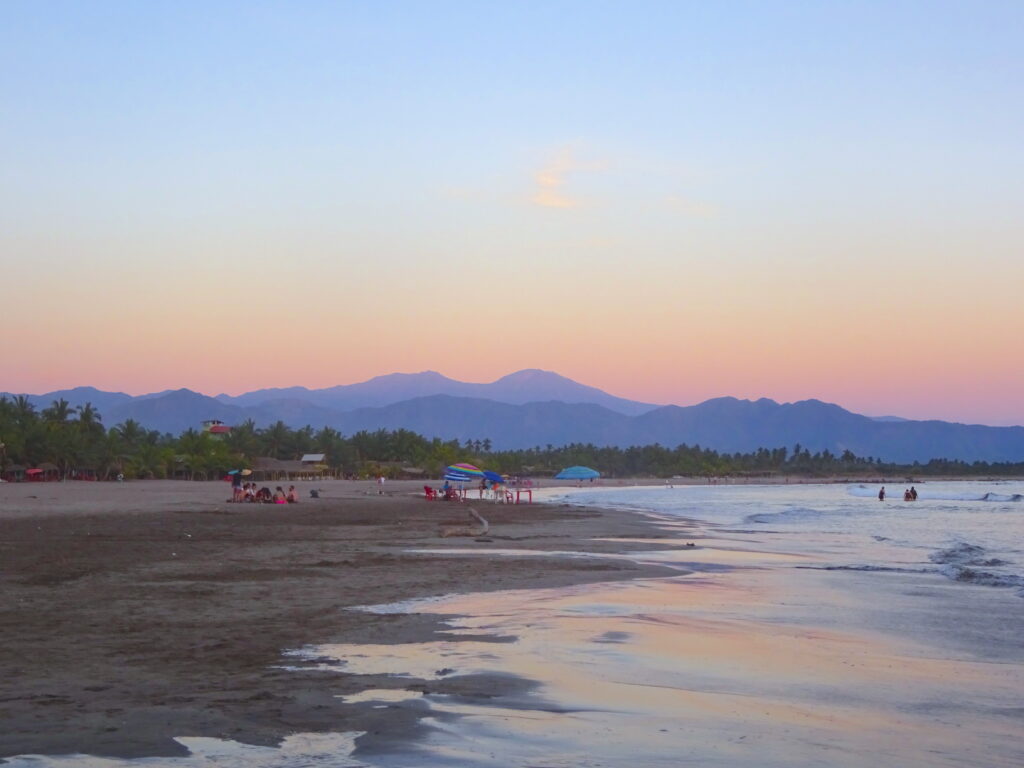

The Beach At San Blas
Peña De Bernal
A 433m-high volcanic rock that towers over the town of the same name, Peña De Bernal is one of the tallest monoliths in the world and considered one of the 13 Wonders of Mexico. In the state of Querétaro, it is popular with Mexican tourists, but still mainly unheard of for English-speakers. Even with Mexican tourists, it is only busy at weekends and bank holidays.
As a day trip from Querétaro city, visiting this monolith is a great adventure. Simply catch a bus from Querétaro to Bernal. You can easily climb two-thirds of the way up the monolith, the path is easy to follow. But to get to the top, you must be more adventurous. Only appropriately equipped rock climbers can reach the top of Peña De Bernal and enjoy views from the very top.
Check out tours to Peña De Bernal.


Peña De Bernal From The Town
Places To Visit In Mexico For Nature Lovers That You’ve Never Heard Of
Mexico has its fair share of beautiful natural locations. The country is huge and contains several ecosystems. There are beaches, mountains, jungles, lagoons and mangroves. And that’s before we start on the wildlife of Mexico. So here are my five favourite natural destinations, which are among the most beautiful places, to visit in Mexico:
Lake Bacalar
Although this destination is becoming a little popular, for now, it is still off the beaten path. Lake Bacalar is a very long and narrow lake in the state of Quintana Roo. It is about 42km long, but only 2km wide, it is also the second-largest lake in Mexico.
Lake Bacalar is a beautiful blue colour, due to its limestone bed. The blue of the water is different shades in different areas, due to depth, giving the lake its other name of the Lagoon of Seven Colours.
Another point of interest that makes Lake Bacalar a great destination in Mexico for nature lovers, is the stromatolites. These are only found in a few locations and are supposedly the oldest life on the planet. Bacalar has a huge population of these stromatolites.
Bacalar is easily reached by bus from Chetumal in the south and most towns in the North, such as Tulum and Cancun. Once at the lake there are plenty of places to swim or even kayak to explore further.
I explored Bacalar from Chetumal, you can read about that adventure in this post.
You can explore Bacalar with Get Your Guide.
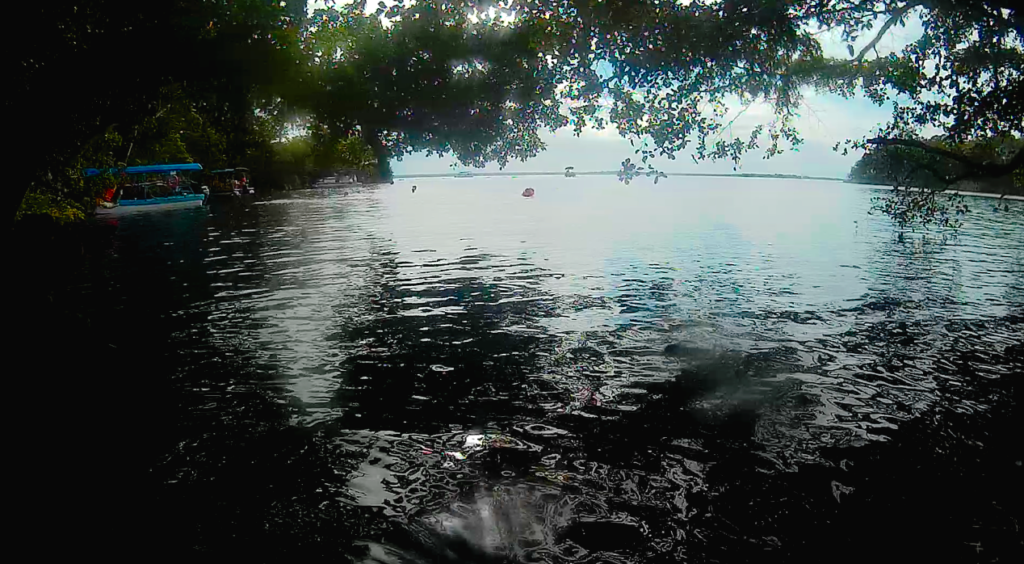

Cenote Negro On lake Bacalar
Sian Ka’an
A UNESCO World Heritage Site, Sian Ka’an Biosphere Reserve, found in Quintana Roo state, is an absolutely stunning place to visit. Its name means “the planet where the sky is born”, and it’s not hard to see why it has such a poetic name.
Discover my favourite UNESCO Sites in Mexico
The reserve is one of the largest protected areas in Mexico, covering roughly 1.3 million acres. A sparsely populated area along the coast, the reserve contains all three of the principal ecosystems of the Yucatán. Here you will find tropical forests, marshes and mangroves, and a large marine environment intersected by a barrier reef. All this is home to many plants and animals, there are over 300 species of birds to be spotted here. Not only that, but the beaches in the reserve provide nesting grounds for four endangered marine turtles. Extremely rare West Indian manatees can also be found in the inlets. If you want some wildlife spotting, Sian Ka’an makes a good choice.
You can reach Sian Ka’an from Tulum. You can do this by colectivo, though it is much easier to go with a tour company.
Find a tour with Get Your Guide and find accommodation in nearby Tulum with HostelWorld.
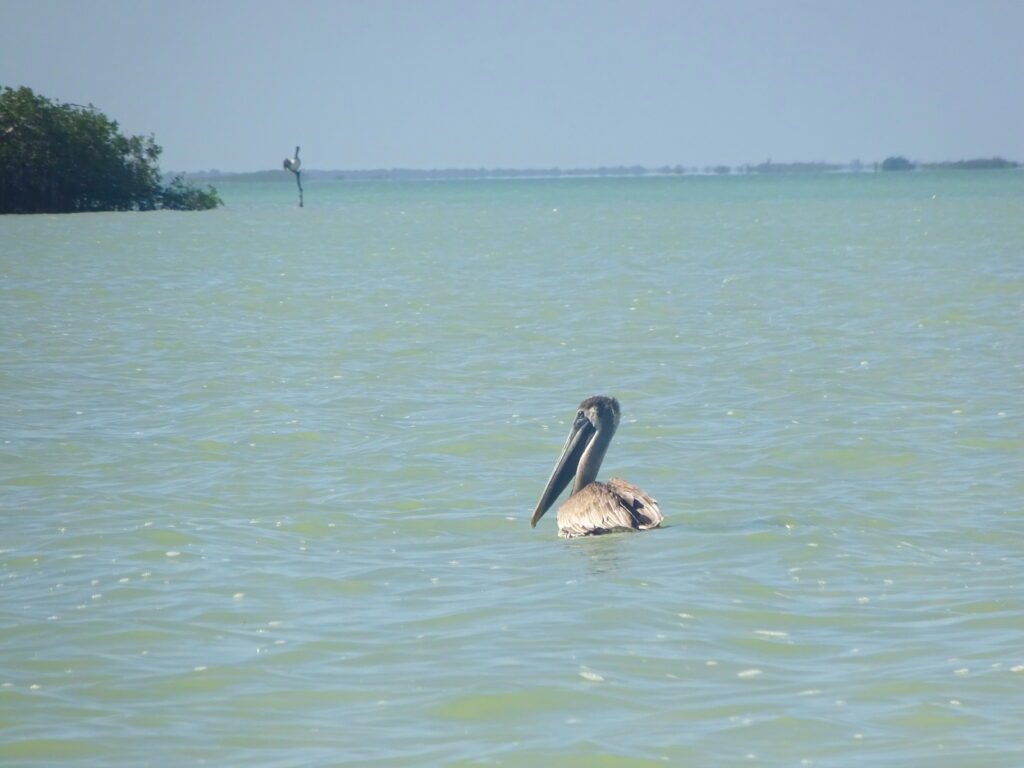

Pelican At Sian Ka’an
Mazunte
If beautiful beaches are your thing, Mazunte makes a great choice. This tiny village in Oaxaca state has its own pristine beach and is an extremely peaceful area.
One thing you must do here is watch the sunset from Punta Cometa. This point is the rocky headland next to the beach and is the southernmost point in Oaxaca.
When it comes to nature, Mazunte has a bit of a dark past that it is now making up for. Mazunte in Náhuatl (Maxonteita) means “please com here and spawn”, which it gets due to the Golfina turtles that breed here. In its past, this sleepy village the site of a horrific turtle industry and abattoir. Luckily, in 1990, the Mexican government pretty much banned this industry overnight (thanks to international pressure). So now Mazunte is a reserve and long-term ecotourism projects are being encouraged.
In Mazunte you will also find Centro Mexicano de la Tortuga. This centre has an aquarium with turtles and is also a turtle research centre. The proceeds of this centre go towards conservation efforts.
Mazunte is a little difficult to get to. There are colectivos from Oaxaca city (but it is a very long drive over the mountains) and Puerto Escondido.
You can visit the Mexican Turtle Centre from Puerto Escondido on this tour. Or if you want to stay in Mazunte (which I recommend), find somewhere to stay with HostelWorld.
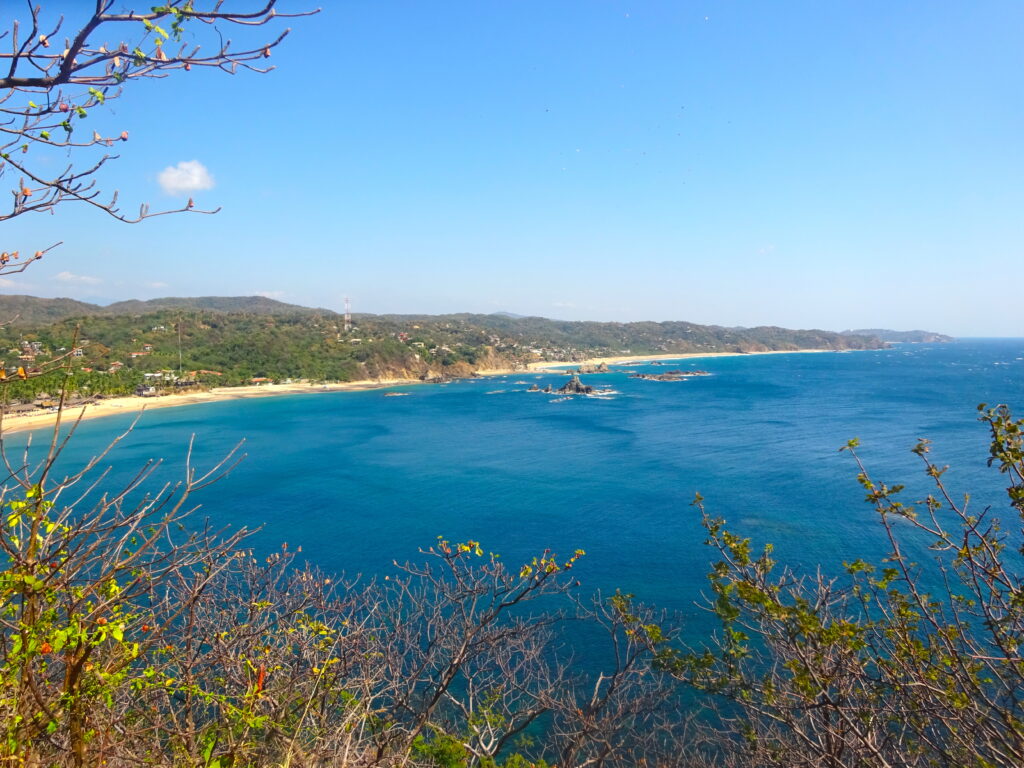

The View Of Mazunte From Punta Cometa
Laguna Ojo De Liebra
“Hare eye lagoon” in English, Laguna Ojo de Liebra is a coastal lagoon in the state of Baja Californa Sur and is part of the UNESCO Whale Sanctuary of El Vizcaino.
In this lagoon, grey whales come to overwinter and breed. During the season you can go out and watch these whales. Technically, the boats aren’t meant to get too close to whales, but from personal experience, the whales (especially the calves) are extremely curious and will come right up to the boat once the engines are turned off.
Learn about the grey whales in my video.
The lagoon is not just important for grey whales though. You can also spot the harbour seal, California sea lion, northern elephant seal and the blue whale. Four endangered turtles also use this lagoon as a breeding site.
You can only get out onto the lagoon with a tour. Tours can be found from Guerrero Negro (I highly recommend Mario’s Tours).
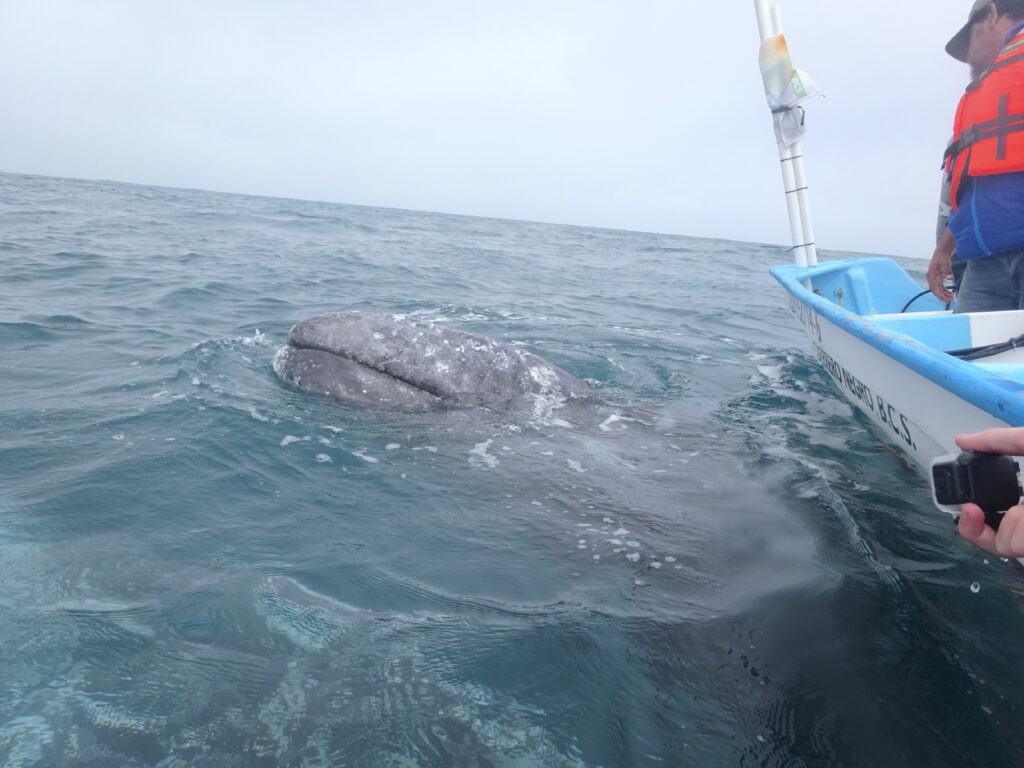

The Grey Whale Calves Get Really Close In Laguna Ojo de Liebra
Punta Mosquito
Isla Holbox is not an island, but a long peninsula. With just one small street and virtually no cars, visiting is like stepping back in time. Holbox is in the Quintana Roo state and is known for its laid back vibes, beautiful beaches and whale shark season. But my favourite outing was to Punta Mosquito.
On Isla Holbox, you can rent a bike and head out to Punta Mosquito, which is north of the village. To get there you have to cross a sandbar that goes through the ocean, so be mindful of the tides or you might end up swimming back. In this area, you will find pristine white sands and wildlife. There are flamingo flocks and horseshoe crabs.
Isla Holbox is reached by ferry from Chiquilá, you can easily get a bus from Cancun to this village.
Check out tours to Isla Holbox on Get Your Guide. Or, if you have more time and want to stay, check out accommodation on HostelWorld.
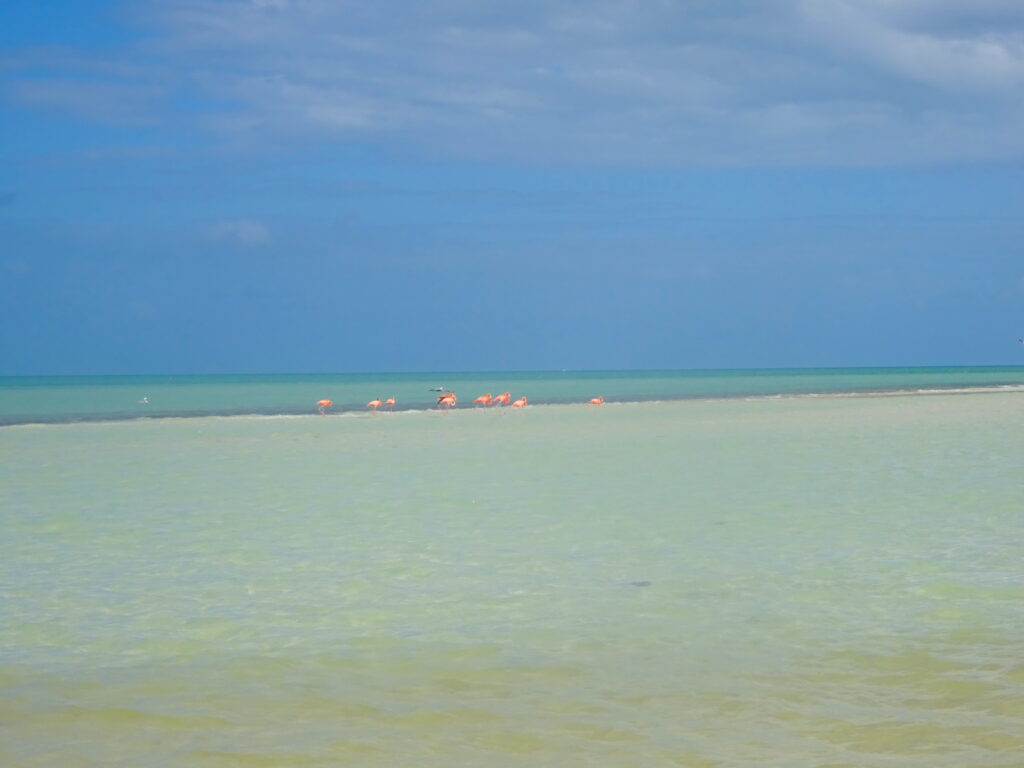

Flamingos At Punta Mosquito
Cultural And Historical Places In Mexico To Visit That You’ve Never Heard Of
As far as history and culture go, Mexico is a great place to visit. Ancient civilisations and their ruins, a culture that has adapted into the Christian traditions of the Spanish that came over. The native people have managed to keep many of their traditions, the cultures and languages are still very much alive today. Here are my favourite historic and cultural Mexican destinations:
Las Pozas
One of the most out-of-the-way places I went to, Las Pozas, or the Surreal Garden of Edward James, is found in the tiny town of Xilitla, in the state of San Luis Potosí. Sprawled in the foothills of the Sierra Gorda and hemmed in by limestone cliffs, it is a dramatic location and where an eccentric English man created a jungle garden.
Sir Edward James rubbed shoulders with many surrealists in Europe, befriending Salvador Dali and Pablo Picasso. After spending time in Europe with these surrealists, he moved to the USA. Later he went south of the border and fell in love with Xilitla, where he moved to in the 1940s.
Sir Edward James spent the 1960s and 1970s creating Las Pozas, which is full of weird and wonderful statues in the jungle gardens. Nine pools of a jungle river cascade through the gardens where you can find surreal sculptures such as the “House With Three Stories That Might Be Five”.
The garden was never actually completed, as it was constantly being developed and redesigned. Sir Edward James died in 1984, leaving his estate to the Gastelum family.
As I have mentioned, Xilitla is a difficult place to get to, but it is possible. The easiest way is to drive yourself, but public transport is still available from Mexico City and Querérato. Though be aware, it is a long and winding road through the Sierra Gorda.
Find accommodation in Xilitla with HostelWorld.
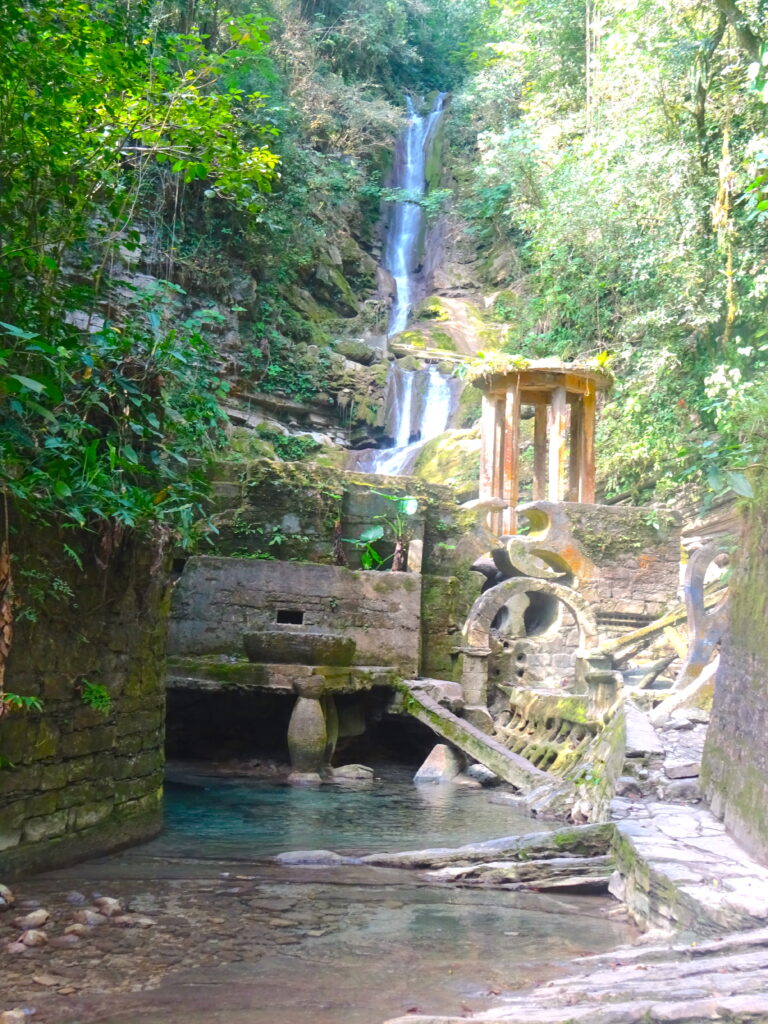

Sculpture And Pool In Las Pozas
Janitzio
When you think of Mexican traditions, the one that springs to mind is normally the Day Of The Dead (Dia De Muertos). This festival originated in Oaxaca, Michoacan and Jalisco states, and it is only after a certain James Bond film that the celebrations were really taken up throughout the country (including where the parade is seen in the film, Mexico City).
Patzcuaro, in the state of Jalisco, is one of the places that you can still see this festival in its original form. The town has a parade and markets that sell Calaveras, but you want to get out to the island of Janitzio on the lake of Patzcuaro.
On this island, there is one small graveyard. The locals canoe over to the island in the early evening, with a single candle at the front of the canoe. They then gather in the graveyard to make offerings and staying by the sides of their ancestors’ graves throughout the night. The graveyard is a riot of orange, due to the marigolds and candles. Go into the graveyard and sit quietly for a true taste of Dia de Muertes.
You can read more about Dia De Muertes on the island of Janitzio in this post.
To get to Patzcuaro, and Janitzio, simply take a bus from Mexico City.
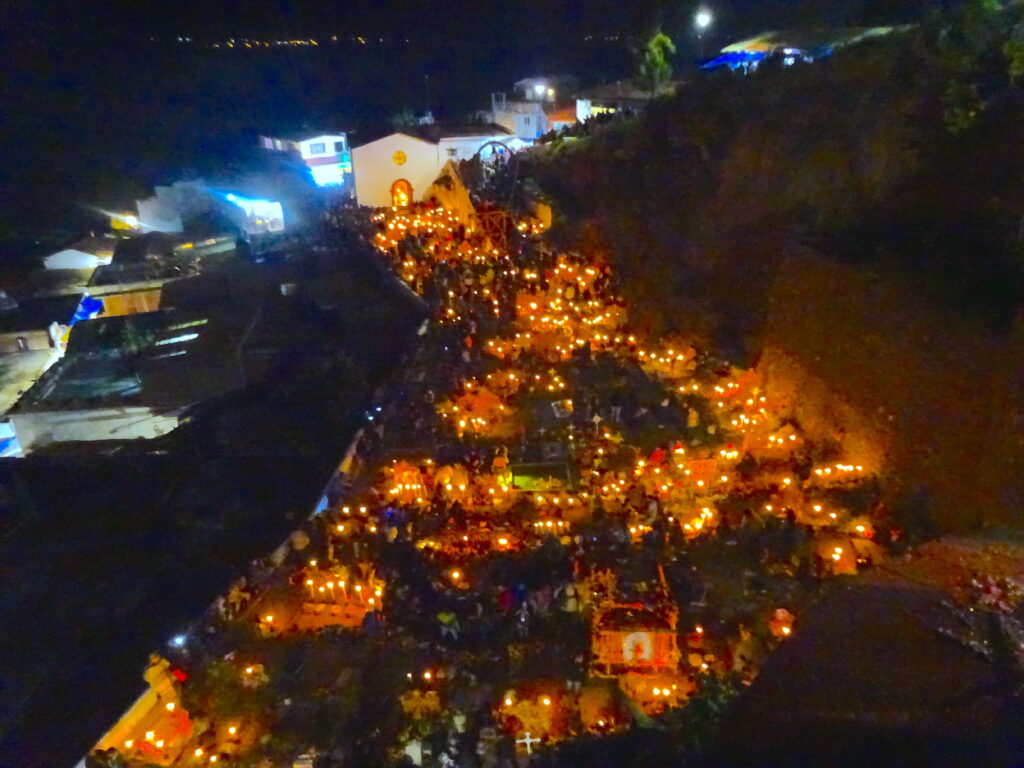

The Graveyard On Janitzio Is A Riot Of Orange On Day Of The Dead
Calakmul
The ruins of Calakmul are part of the UNESCO site of the Ancient Maya City and Protected Tropical Forests of Calakmul. Found in the state of Campeche, these ruins are hidden deep in the jungle and are thought to be the largest archaeological site in Mesoamerica. Calakmul even has the largest Mayan structure in existence; the base of the Great Pyramid is almost 5 acres.
The ancient city of Calakmul is believed to have been one of the most powerful in the Mayan lowlands. Part of the Kaan Dynasty, it is likely that this city was the capital. The ruins themselves were only discovered in 1931, due to the remote location, and excavations began in the 1980s.
Even though it was an important city, these ruins aren’t busy. They’re hard to get to, so most people stick with Chichen Itza instead. Personally, I found Calakmul much more impressive!
To get to Calakmul you either need to rent a car or go on a tour. The ruins are hidden deep in the jungle, near the Guatemalan border, and are hours from any city.
You can read more about Calakmul in this post.
Explore Calakmul on this tour. You can also find accommodation in Chetumal, which makes a great base to visit the ruins from, on HostelWorld.
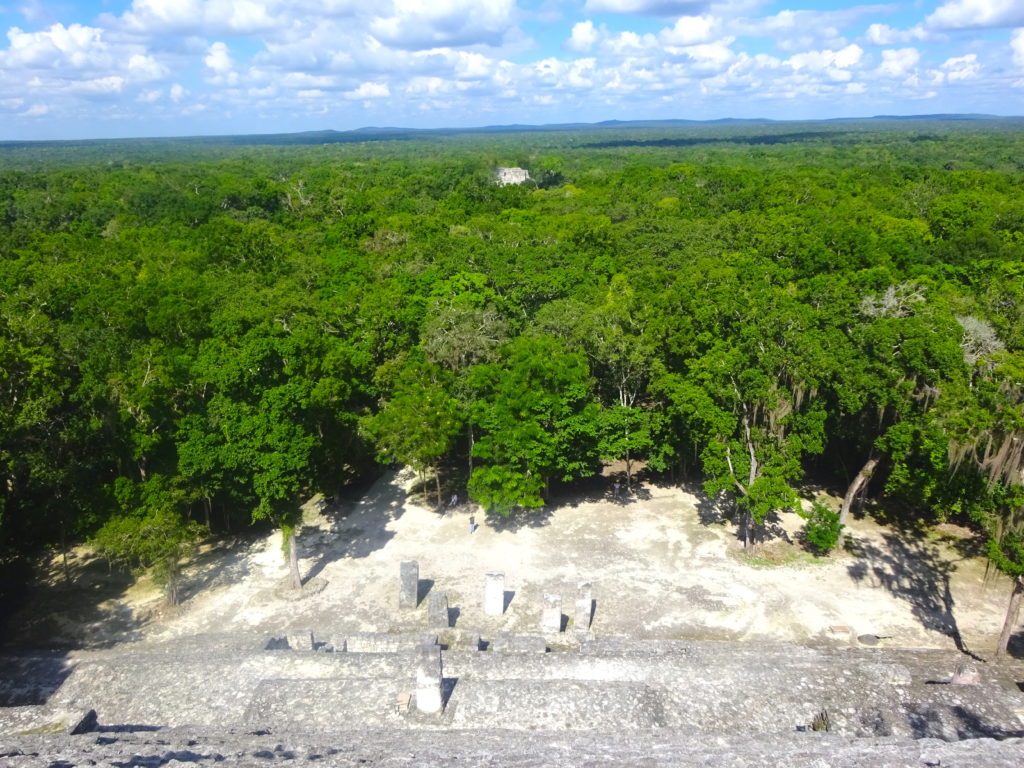

Calakmul Ruins
El Tajín
Some more ruins that are off the beaten path, El Tajín ruins are found in the state of Veracruz and became the most important centre in north-east Mesoamerica after the fall of the Teotihuacan Empire. These ruins are a UNESCO World Heritage Site due to there cultural importance and architecture. The site is also the most impressive along the Gulf Coast.
In this site, you will find numerous substantial structures. The most famous of which is Pirámide de los Nichos, or Pyramid of Niches. This pyramid is unique and one of the most extraordinary Mexican ruins. Rising to about 20m in six receding tiers, each face has regular niches. There are 365 in total. Although the reason for the niches is unknown, there are plenty of theories. One thing is certain, they are not just for decoration.
No one actually knows who built this city. It could have been the Huastecs, the Totonacs, or another group. The name is thought to mean “City of the Thunder God” and there is a belief that the twelve thunderstorm deities still inhabit the ruins.
Getting to El Tajín is fairly straightforward. You can catch a bus from the town of Papantla to the ruins.
You may also like my Best Archeological Sites In Mexico
Search tours to El Tajín on Get Your Guide.
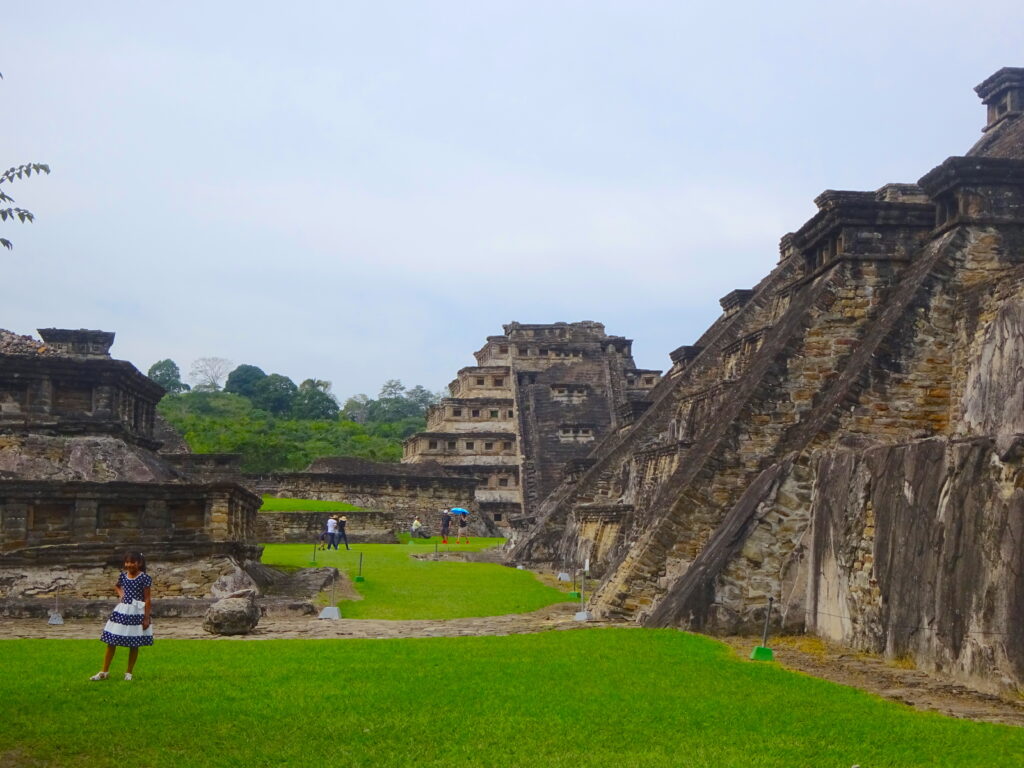

Pirámide de los Nichos In El Tajin
Mexcaltitán
For a real remote location, Mexcaltitán has a lot of history. In the state of Nayarit, to the north of San Blas is the islet of Mexcaltitán. This Náhautl name translates as “House of the Mexicans” and is a candidate for the legendary homeland of the Aztecs, Aztlán. It was from here that a tribe left to begin their journey which saw them settle in what is now Mexico City, after seeing an eagle eating a snake on a cactus.
There’ not much on the island, but it is still worth visiting if you like history, legends and culture. There are only a few inhabitants, who are mainly shrimp farmers, in the area. The island also has a tiny museum that goes through the theory of it being the Aztec homeland.
You can only get to this island from Santiago Ixcuintla, you’ll need to get a taxi from here to La Batanga. Then it’s a boat ride out to the island. Personally, I went from San Blas (which involved a bus to Santiago Ixcuitla, then a taxi).


Mexcaltitán Is A Contender For The Legendary Homeland Of The Aztecs
Cities To Visit In Mexico That You’ve Never Heard Of
You can’t get off the beaten track in Mexico without exploring some of the lesser-visited cities. There are some really beautiful places, with lots of history, impressive buildings, enchanting myths and beautiful views. Here are my five cities and towns that you’ve probably never heard of:
Campeche
The city of Campeche is the capital of the state of Campeche and, for some reason, doesn’t draw many tourists.
A UNESCO site, this city is one of Mexico’s finest colonial cities. The historic centre of the city is still relatively intact, surrounded by defensive walls and fortress.
The archaeological museum holds two jades masks from Calakmul, which are well worth seeing, especially if you have been, or plan to go, to the ruins themselves. There is also the city museum that tells you of the city’s history as a port town and the pirates that raided it.
Only two sections of the walls are intact, but you can climb these. From the walls, you get some good views of the historic centre of Campeche.
Campeche is well worth a visit due to it’s UNESCO status, the archaeological museum, colonial buildings, old walls, history of pirates and the sea view. You can catch a bus to this city from most other cities on the Yucatán Peninsula and other destinations such as Palenque.
Explore Campeche with Get Your Guide or find accommodation on HostelWorld.
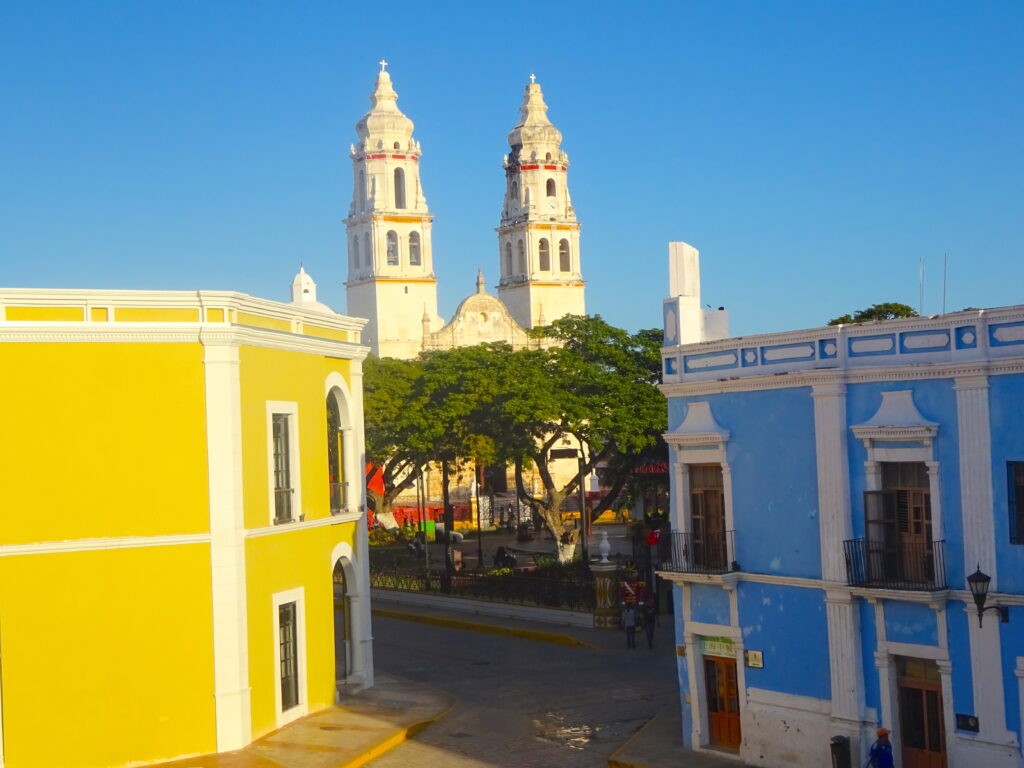

Colourful Colonial Buildings Of Campeche
Guanajuato
One of my favourite cities in Mexico was Guanajuato, also in the state of Guanajuato. This city was once the wealthiest cities in Mexico, due to its mines flowing with gold and silver.
Guanajuato is wedged within a narrow ravine, so you come upon this city very suddenly. It is a beautiful city, once again colonial. The city is very protective of its colonial building, no modern building will be found, nor traffic lights or neon signs. Guanajuato also has UNSECO status.
Although the city is very much a student city, don’t let that put you off. In fact, the students act as minstrel guides through the streets on walking tours (Spanish only though). There is a wealth of museums in this colonial city, from Don Quixote, the city museum and Diego Rivera. It is a historic city with lots to do.
Guanajuato also has its own version of Romeo and Juliet, with the legend of the kiss at Callejón del Beso. If lovers kiss on the third step (which is handily painted), they are granted seven years of happiness.
You can reach Guanajuato by bus from many big cities in Central Mexico and the surrounding areas. Buses go to this city from Guadalajara, Mexico City and Querétaro. The central bus station is actually a little out of the city, so you need to take a local bus to the centre.
You can explore Guanajuato on a day trip with this tour. Or find somewhere to stay with HostelWorld.
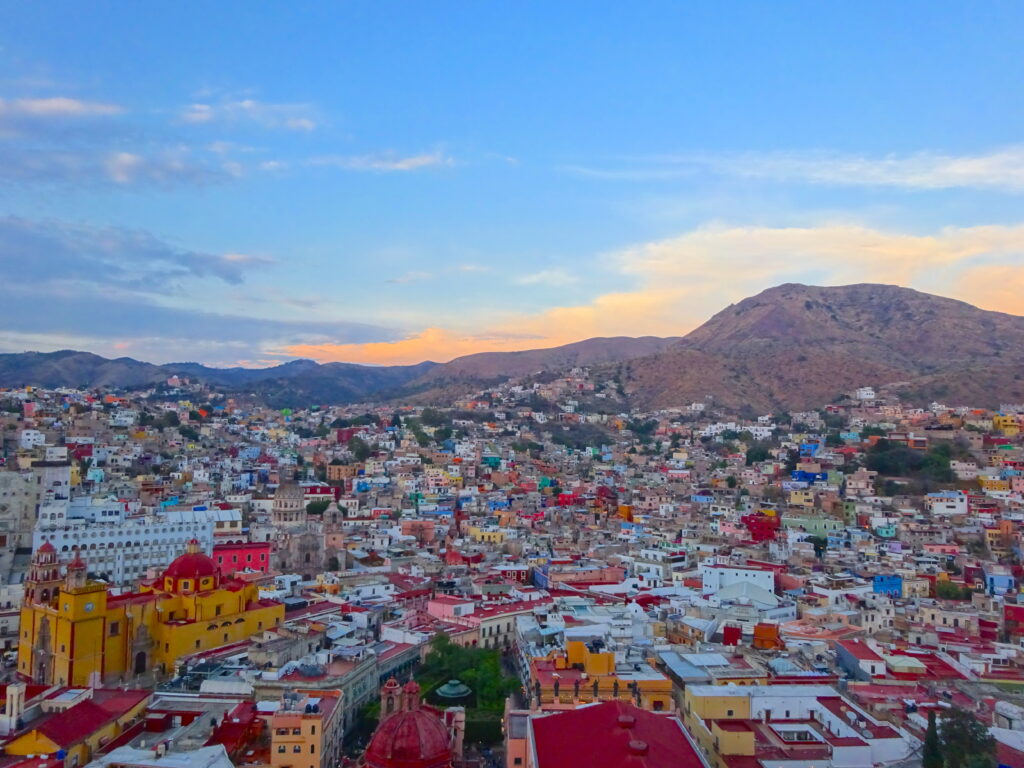

View Of Guanajuato
Valladolid
In the Yucatán state, Valladolid is often only visited as it’s close to Chichén Itzá, and so you can get to the ruins from here early and beat the crowds. However, it is well worth visiting purely for the city itself.
Although the city was damaged during the Caste Wars, it still has a colonial feel. Valladolid is known as the rural capital od the Yucatán state, as it caters to the local farmers and ranchers. The city is also known as a great place to sample traditional Yucatán food.
One thing that makes this city really stand out is the cenote in the city itself. Cenote Zací is a great place for a swim and a cool off from the heat. The cenote is filled with catfish and is an unusual feature in a city.
Buses from other cities in the Yucatán Peninsula often stop off at Valladolid, so it is easy to get to.
Check out accommodation in Valladolid with HostelWorld.


Valladolid Has A Cenote In The City
Xalapa
The capital of Veracruz, Xalapa is a big, relatively modern city. It is busy with traffic, and so doesn’t have the calm of other Mexican off-the-beaten-path cities, but is well worth visiting.
This city is set in the countryside, sprawling across a hillside below a volcanic peak. It is a cultural centre and even hosts a classical and traditional music festival in June, a jazz gathering in August and a literary festival in September.
The archaeological museum here is a must, which is arguably second only to the archaeological museum in Mexico City, but without the crowds. Xalapa is also renown for its parks, which display tropical plants. These parks offer great picnic spots not far from the city centre.
But there is another draw to this city; it makes a great base for adrenaline junkies and nature lovers. As Xalapa is close to a number of rivers that cascade down the sierra, there are some spectacular waterfalls and some of Mexico’s finest whitewater rafting nearby (such as in Jalcomulco).
Xalapa can be reached by bus from many cities in Veracruz, such as Veracruz city. You can also reach this city from Mexico City.
Day trips to Xalapa from Veracruz are available on Get Your Guide. Or find accommodation with HostelWorld.
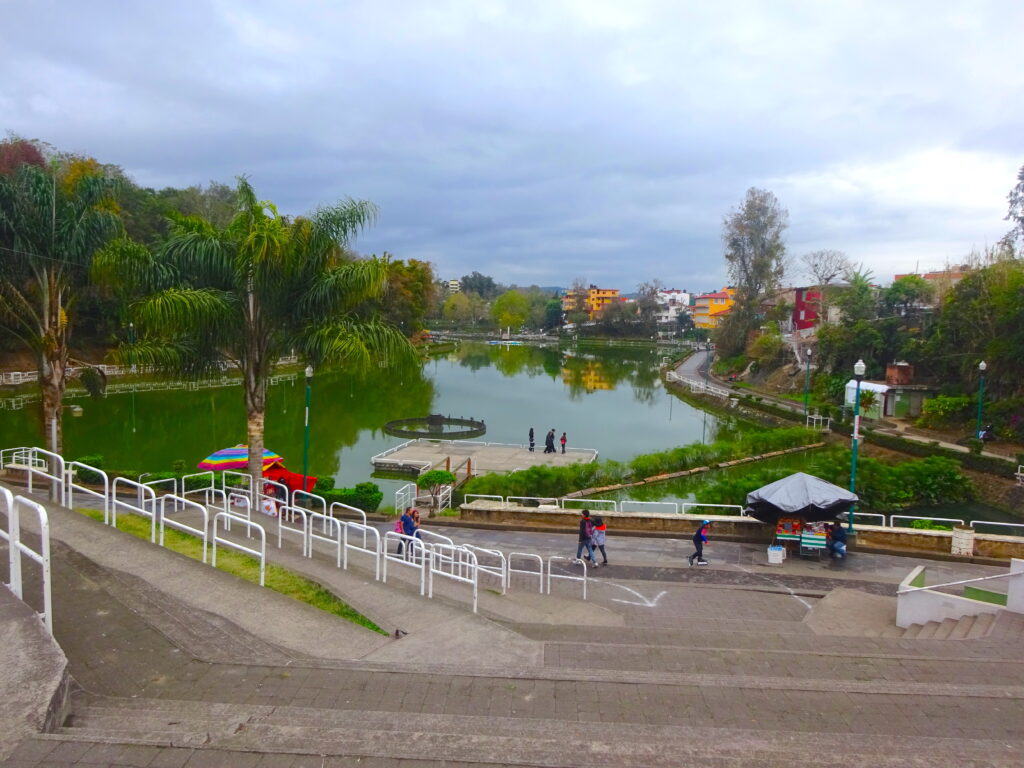

Paseo los Lagos (Park Of Lakes) In Xalapa
Durango
The capital of the state of Durango is, you guessed it, Durango city. This city is found with a small detour from the central corridor that runs between Mexico City and the US border. But it is well worth the diversion, as it is one of the prettiest cities en route.
Another colonial city, Durango has a number of historic buildings and museums that are worth visiting. There is Paseo Túnel de Minería, which commemorates the city’s mining heritage. The tunnel has mining exhibits and runs below the streets of Durango. Another place worth visiting is Palacio de Zambrano, which now houses the Museo General Francisco Villa. Bold murals in this building show the history of the state.
Another reason to visit this city is its link to the old Wild West films, in particular those of John Wayne. This actor came to the city in the 1960s and filmed many westerns here. And so, just outside of the city, you can visit the old studios.
Durango is quite a journey from many cities, making it a bit difficult to get to. But you can catch a bus from Chihuahua, Monterrey, Mazatlán and Mexico City, just be ready for a long bus journey.
Find somewhere to stay in Durango with HostelWorld.
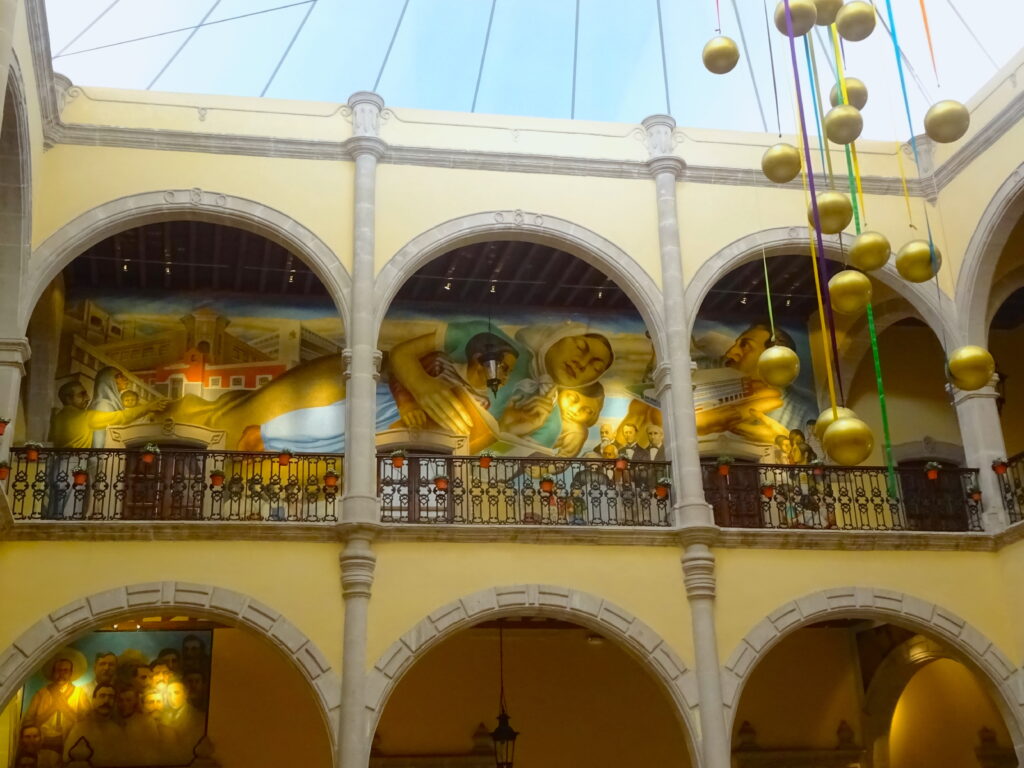

Murals In Palacio De Zambrano Durango
Getting off the beaten track in Mexico can reward you with some unique places to visit. It is worth getting off the well-trodden path and the country has a lot to offer. From beautiful natural places to historic cities. Some are not the easiest to get to, but well worth the effort. Mexico tourist attractions go way beyond Cancun and Chichén Itzá. When it comes to finding the best places to visit in Mexico, you should try to visit some of these lesser-known destinations.
Have you been to any of these Mexico destinations? Let me know in the comments below!
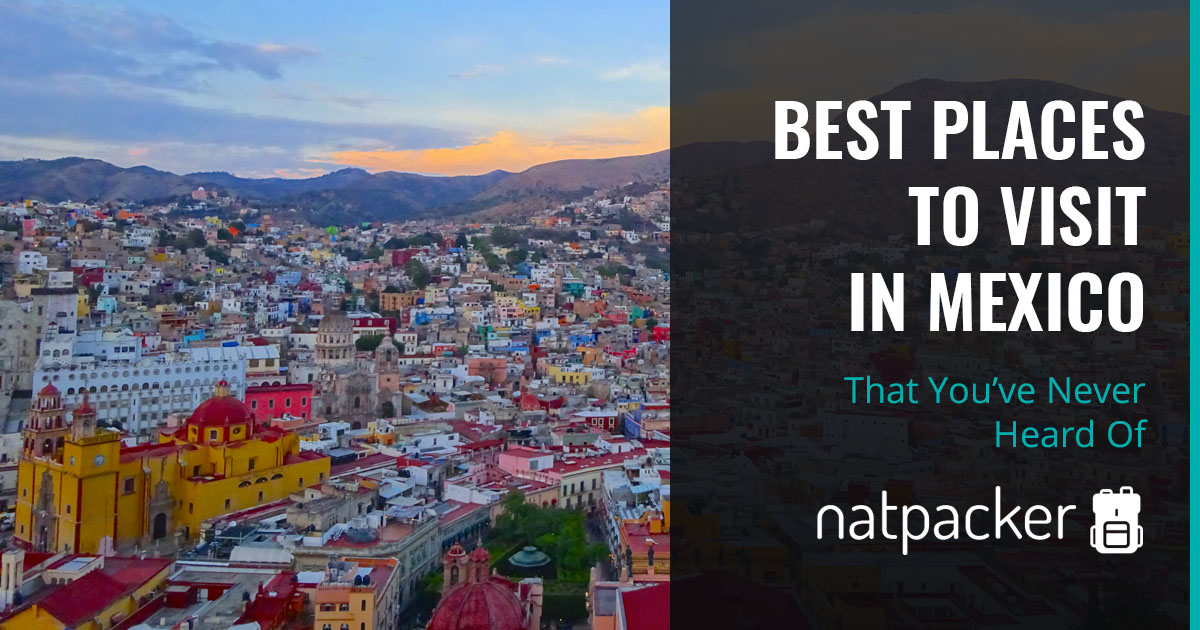

18 Comments
Wow! These look amazing. The pyramids were definitely on my list when I eventually visit Mexico but I’ve got lots more ideas now. I’d never heard of the volcano at Paricutín and the view of Guanajuato is incredible! I think Mexico just moved up in my list of priorities.
There’s so much to see in Mexico! It’s a shame so many people stick to just the hot tourist spots of the Yucatan, there is so much more to the country. I hope you manage to explore the country after the pandemic! Let me know how you get on 🙂
Wow, it,s a complete review of Mexico make me interested to put Mexico in my list to go.
Glad you enjoyed my post 🙂 I hope you make it over to Mexico and have a great time!
Lots of inspiration for future trips here!
Hope you manage to make some trips to these places 🙂
These places all look amazing to visit. Thanks for the great tips!
Glad you found the post useful. Hope you make it to some of these!
There are sooo many places in Mexico I want to go, but I’ve never been in the country at all! Thanks for making my list longer 😉
Glad you enjoyed the post 🙂 I hope you make it to Mexico one day, you’ll have to let me know if you make it to any of these places and which was your favourite!
These are fun spots! I could barely move past Laguna Ojo de Liebra. I think if I found myself at a whale nursery I would have never left. Maybe just a quick trip to Punta Mosquito to see the flamingos 🙂
Haha! I really didn’t want to leave Laguna Ojo de Liebra! The weather wasn’t so great when I was there, but that didn’t take anything from the experience. I would love to go back and spend some more time there. Hope you make it there one day!
Wow, I had no idea there was so much variety off the beaten track in Mexico. I love how you’ve separated this out into different sections too. I’m definitely keen to try some of those adventurous suggestions!
So glad you enjoyed the post! There’s definitely more to Mexico than Cancun and Playa del Carmen!
There are many hidden places around the world that are cheap and beautiful.
Thank you for this post and your tips, I’m planning for mexico next year, is it really safe?
I would definitely say that Mexico is safe. It’s just like anywhere, use the precautions you normally would when travelling. So don’t carry round loads of expensive stuff, don’t go into areas that look dodgy etc. Obviously, Mexico City is known for pickpockets, just like any other big city.
The only place I felt uncomfortable was Acapulco, but only after dark. And I was advised not to go to Monterey.
So, as long as you do your research on a place and don’t do anything silly when there, you should be as safe as most places that you travel.
I hope you enjoy your time there!
Wow! These look amazing. The pyramids were definitely on my list when I eventually visit Mexico but I’ve got lots more ideas now.
Hi Jolly, glad you liked the post! I hope you get to Mexico and manage to see lots! There’s so much to see there!